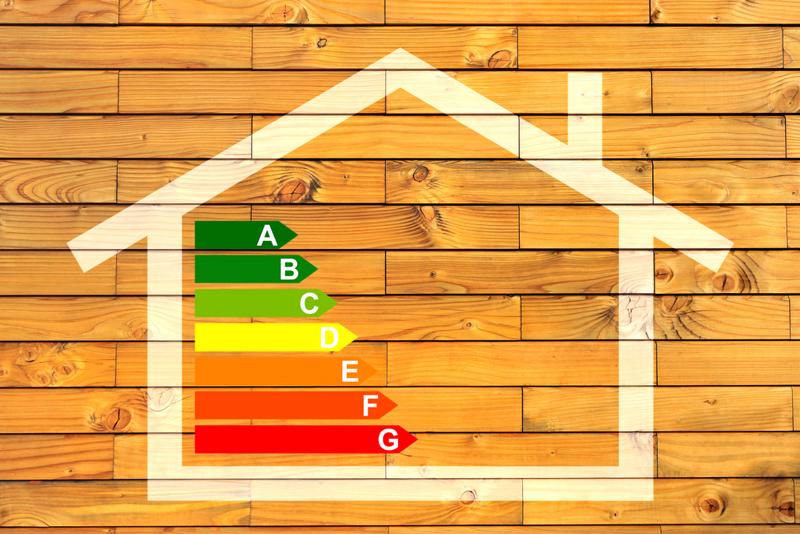The planet is in a state of turmoil. Resources are dwindling, pollution is ever-present and the temperatures are rising. As the population grows and locations become more urbanized, the state of the environment worsens. People's behaviors and companies' habits only exacerbate the problem.
In 2013, the U.S. emitted nearly 7 billion metric tons of carbon dioxide, and much of it came from transportation, electricity and manufacturing, according to the U.S. Environmental Protection Agency. Longer business hours, farther distances between buildings and increased production have benefited businesses' efficiency, but have had negative effects on the environment and companies' business banking accounts.
Luckily, there are plenty of solutions to help make an organization eco-friendly. By implementing green practices, such as energy-saving appliances and waste management programs, businesses will see a plethora of benefits.
"LEED-certified buildings reduce energy and water bills by 40%."
1. Cost-effective
Running your own company can be expensive. You not only need to pay for a location and hire employees, you'll also have to work supplies and utilities into your financial plan. The U.S. Green Building Council's Leadership in Energy & Environmental Design certification program has various ways that you can make both your building and your operations environmentally friendly, which in turn will add up to cost savings. According to the USGBC, these structures reduce energy and water bills by 40 percent.
You could also establish office policies that reduce waste in the building. Start a recycling program, email instead of print, provide or require reusable water bottles or use washable plates and utensils in the dining hall. These steps can go a long way toward reducing your costs and helping the planet.
2. Energy efficient
Buildings use an abundance of energy. According to the EPA, they account for 39 percent of energy usage and 68 percent of electricity in the U.S. This results in both wasted resources and money. There are alternatives to gas-powered energy, such as solar, wind and water. However, these will have an increase initial cost.
Luckily, energy efficiency is possible with few costs, Energy Star claimed. You can reduce energy usage by 10 percent just by lowering the thermostat and turning off lights when not in use. At the end of the day, make sure that all electronics, including computers, printers and copiers, and the lights in all parts of the facility are off. At a little more expense to you, there are sensors that detect when someone is in the area and can adjust both the lighting and the temperature accordingly. You could also invest in energy-efficient equipment, such as refrigerators, coffee makers and computers. While these may be more expensive, you may qualify for tax rebates and deductions by implementing sustainable practices and devices.
 Making energy efficiency a priority saves you money and aids the environment.
Making energy efficiency a priority saves you money and aids the environment.3. Productive and healthy employees
While you may have expenses that are needed to run your business, you're actually putting the most money toward your staff. According to the World Green Building Council, more than 85 percent of your funds pay for salaries and benefits, while only 10 percent is on rent and 1 percent on energy. With that large of your budget going toward your employees, don't you want your staff to be as happy and healthy as possible?
Creating a sustainable and green workspace can improve air quality and office layout, which leads to higher productivity and better health, the World Green Building Council claimed. With better air quality, businesses may see an 8 to 11 percent increase in productivity, and lighting and ventilation improve employees' work by 23 percent and 11 percent, respectively.
A poor work environment can also increase absenteeism and illness. Sick Building Syndrome can cause employees to feel sick while at work due to poor air quality and ventilation, the source explained. Workers may have scratchy throats, irritated eyes, a cough, dizziness or nausea. This may affect up to 20 percent of employees. However, by creating a green workplace, companies may be able to reduce the impact of SBS by 70 to 85 percent.
4. Consumer satisfaction
The general population is becoming more and more eco-conscious, which means businesses will need to cater to consumers' desire for sustainable products and services. According to a survey from Nielsen, 66 percent the global population think companies should consider the environment when making business decisions. Nearly 60 percent of people are willing to invest in companies that are green, and 46 percent will pay more for environmentally friendly products.
"60% of consumers are willing to invest in companies that are green."
Your new green practices could be a great way to not only promote your goods, but to also raise awareness for your brand, BPlans explained. When you're dedicated to protecting the environment, eco-conscious consumers will be loyal to your company. Other businesses, such as Chipotle, Starbucks and Panasonic, have already taken steps to create a sustainable supply chain and give consumers what they desire.
5. Environmental benefits
While your business will experience a variety of benefits by switching to green practices and products, it will also have a positive impact on the environment. By reducing your energy usage and using sustainable materials, you'll be able to lessen your company's greenhouse gas emissions and decrease the amount of waste it produces, Kevin Kampschroer, the director of the Office of Federal High-Performance Buildings at the General Services Administration, said in a presentation to a House of Representatives' subcommittee.
If you need to build a new location or renovate your current one, you can follow LEED guidelines to ensure you're not wasting materials. According to Kampschroer, green building can reduce construction waste in landfills by at least 95 percent.
As society expands and progresses, the need for eco-friendly practices increases as well. To preserve the resources for both you and future generations, you can implement green products and procedures into your business. These will show positive benefits for your business and the environment.

